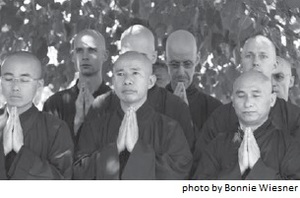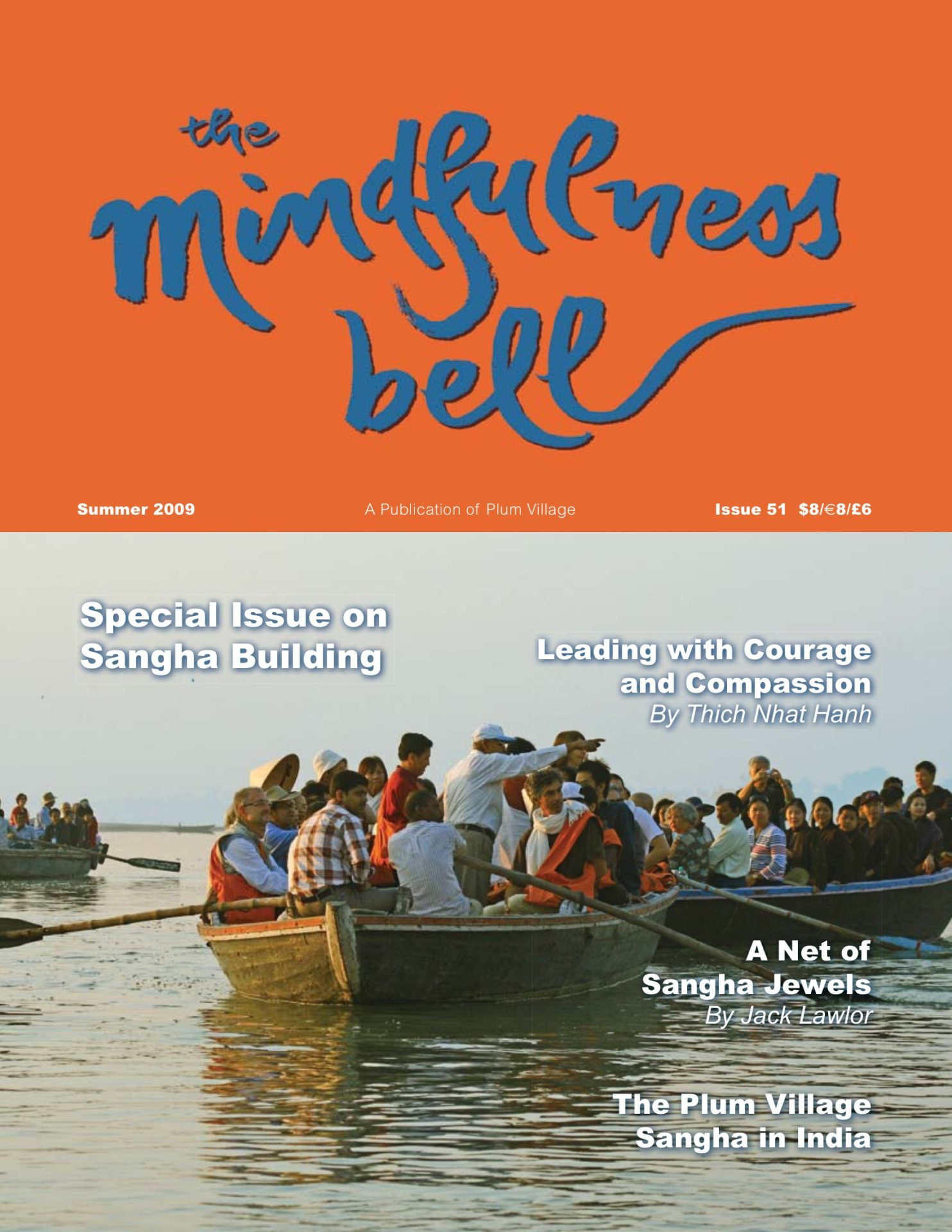
Thich Nhat Hanh shares the fruits of monastic civilization with lay practitioners so that we, too, can experience community as a resource for awakening. Meditation can seem easier when we’re in a group, and we learn from each other, so we build Sangha to enjoy and support our practice.
The Buddha was explicit about the value of community: “Monks, as to external factors, I do not see any other factor that is so helpful for the arising of the seven factors of enlightenment as this: good friendship.” (Samyutta Nikaya,

Thich Nhat Hanh shares the fruits of monastic civilization with lay practitioners so that we, too, can experience community as a resource for awakening. Meditation can seem easier when we’re in a group, and we learn from each other, so we build Sangha to enjoy and support our practice.
The Buddha was explicit about the value of community: “Monks, as to external factors, I do not see any other factor that is so helpful for the arising of the seven factors of enlightenment as this: good friendship.” (Samyutta Nikaya, Bojjhangasayutta, 51)
My first experience with Thay’s community was at a five-day retreat. Someone in our Dharma discussion group suggested we could keep meeting after we returned home, so we created a roster, and someone volunteered to host a gathering. Two weeks later, we sat, walked, listened to a reading, and shared our experience of the practice. We couldn’t agree on a name, but the No-Name Sangha enjoyed practice together enough that we met each week for several years!
I enjoy it when people visit our Sangha, and I like to visit Sanghas, too. When my teenage son and I went to check out some colleges, I used the Mindfulness Bell Sangha directory to locate friends along the way. [Editor’s note: the Sangha list is now online at www.mindfulnessbell.org under “Directory.”] One woman I called said that the Sangha in her town hadn’t actually met for over a year, but she was happy to meet me, and even offered us a room for the night! We meditated in her garden, and then talked about what made practice nourishing, what some of the difficulties could be, and so on. A few months later, she called to thank me for the visit, adding that she had talked to some of the people in her old Sangha and they had started to sit together again.
How Does Sangha Support Practice?
First of all, Sangha is an explicitly safe place. “Alone together” in community, we make the practice visible, credible, accessible. When we’re alone, we may routinely get carried away by our thoughts, but Sangha reminds us how to be diligent and observant. We recognize what’s true and nourishing, and we create a foundation upon which we can stand when we encounter adversity. The gardener makes the garden, and the garden makes the gardener.
A practice community is a creation, and takes time, but the work of Sangha building isn’t about planning and hard labor. It requires involvement, but when it feels difficult, we’re not doing it correctly. Learning how to build Sangha, like meditation, means learning how to get out of our own way!
Sustaining a Sangha is practice, too. If we’ve been nourished in the Sangha, we’ll have patience to learn to trust the “Sangha eye” to arrive at decisions that will be in everyone’s best interest. Lay practitioners can implement practices that the monastics rely upon, like Beginning Anew and Shining the Light, but as Thay says, “What is most important is to find peace and share it with others.”
“This Is the Entire Holy Life”
On one occasion, the Buddha was dwelling in the Jeta Grove of Anathapindika’s Park, in Savatthi. His attendant, Ananda, mused to his master how the company of like-minded people constituted such a big help: “Venerable sir, this is half the holy life, that is, good friendship, good companionship, good comradeship.” Vehemently, the Buddha corrected him: “Not so, Ananda! Not so, Ananda! This is the entire holy life, Ananda ...When a bhikkhu has a good friend, a good companion, a good comrade, it is to be expected that he will develop and cultivate the Noble Eightfold Path.” (Samyutta Nikaya, Part V, Ch.1)
Dictionaries define Sangha as “the community of Buddhist monks,” but more inclusively, it applies to any group that meditates together. With practice, we may recognize that Sangha actually consists of everything that supports us. We bow to a cushion, smile to the bean in our soup spoon, attend to the rustling of leaves, the splash of the rivulet.

Caleb Cushing, True Original Commitment, practices with the Pot Luck Sangha and the Open Door Sangha in the East Bay Area of Northern California.

